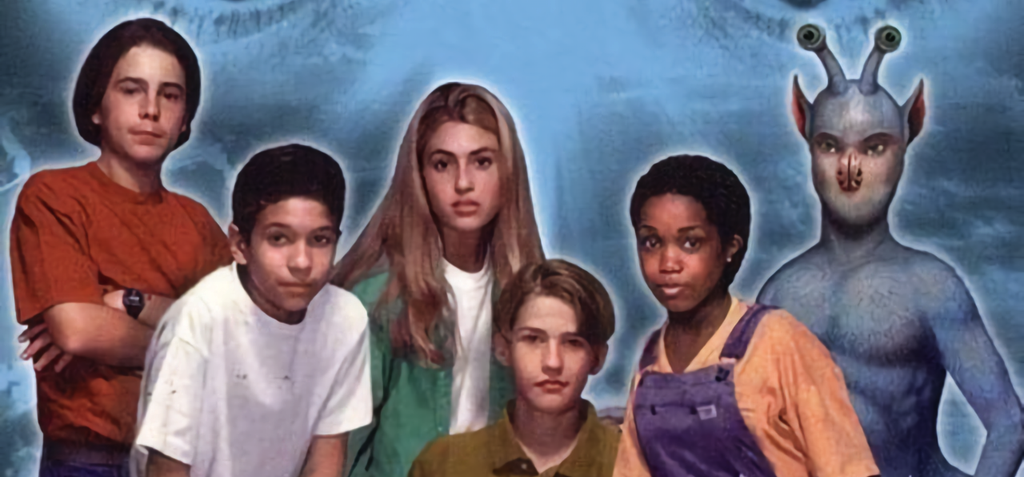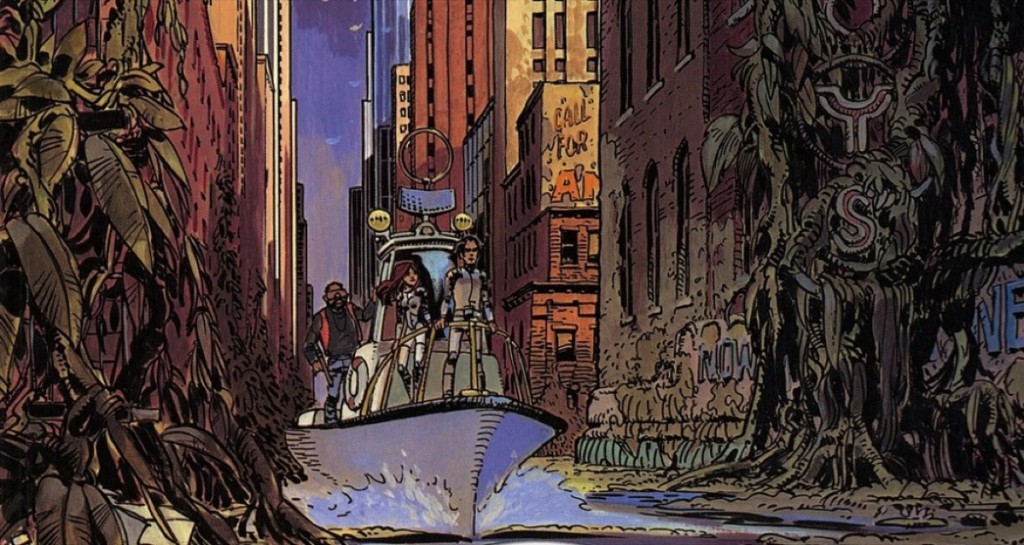
An ‘Animorphs’ retrospective
By Lauren Kelly, Editor-in-Chief
As a kid’s book series written in the late ’90s, Animorphs is probably best known these days for its cheesy covers—often seen parodied online—or its short lived, also-cheesy TV show. However, read by adults, the books themselves stand up incredibly well, and are fantastic examples of the sci-fi genre for any age.
The Animorphs series takes place over 62 books—54 books in the main series, 4 Megamorphs, and 4 Chronicles. Each of the main books switch point of view (POV) between the six protagonists, so you get to learn their motivations and fears. At around 150 pages each, they are a relatively small commitment, so the large number of installments isn’t as daunting as it seems when contemplating a read-through. There are read-order lists online if you’re not sure when to read the Megamorphs and Chronicles, which are some of the best books in the series.
Animorphs takes place in our world, in the ’90s, with one major difference: A parasitic alien race called the Yeerks has arrived on Earth, looking to conquer it. Outside of a host body, the slug-like Yeerks are blind. However, they can fully take control of a host by entering through the ear and attaching themselves to the brain. Each host—called a Controller—is fully aware of what is happening at all times, and is forced to watch helplessly as the Yeerk in their head uses their voice and mannerisms to fool their family and friends into becoming Controllers as well.
The series starts with the five soon-to-be Animorphs being given the power to morph into any animal or human whose DNA they acquire through touch. They were given this power by Elfangor, who is an Andalite, another alien race trying to stop the Yeerks. The Animorphs are tasked with fighting a guerilla war to slow down the Yeerks until the Andalite fleet arrives. The Animorphs are 13 at the start of the series.
For books targeted at a young demographic, they pull very few punches. Author K. A. Applegate stated that she wanted her story to be as realistic as possible: “Here’s what doesn’t happen in war: there are no wondrous, climactic battles that leave the good guys standing tall and the bad guys lying in the dirt.” The books are true to this; the children go all out in battle, and while in morph lose eyes, limbs, guts, and nearly their lives many times. When their plans fail, as they often do, the Animorphs face devastating consequences. But it isn’t just in violence that these books skew more mature.
Each character has their own distinct motivations and character arcs, so conflict in the group feels earned, and the narrator of each book is made unmistakable by the writing style. Jake, the kid forced into the role of leader, is tasked with risking his friend’s lives on his every order, and no matter what trauma he endures he never allows himself to show any weakness—even when he almost dies.
His cousin Rachel, the group’s over-achieving, beautiful, preppy girl, is also their combat-loving berserker, and she has to deal with the weight of her role as the “fearless” one, as well as horror over the lines that she continues to cross throughout the series.
The other four, Cassie, Tobias, Marco, and Ax—a young Andalite—all struggle with their own personal demons. Each character internalizes much of their pain, sharing it only with the reader. Their mental health declines throughout, as they experience PTSD, and recurring, horrifying nightmares.
The Animorphs’ actions are often morally grey. The series continually demands that the protagonists answer questions like: What would you personally give up to further your goals? How far would you go to win the war? What is justified to achieve freedom? Could you kill your family? By crossing these lines, are you better than the enemy? As Rachel thinks in The Underground, “Even I have enough sense to know the words ‘we have to win’ are the first four steps on the road to hell.”
This may sound awfully heavy—it often is—but there is plenty of levity. K. A. Applegate is masterful at slapstick and at group banter, and especially early on the group’s interactions are charming and fun. Ax’s books, filled with his deadpan humour and his joyous love of human food—especially Cinnabon—are some of the funniest in the series.
Some plots, on the surface, are ridiculous. These are kid’s books, after all. The humour, like many of the more-popular forms of kid’s media these days, is often fun for all ages, yet many jokes can only be appreciated by an older audience. The frequent, now dated, late ’90s references, from Xena to AOL, are all the more entertaining for those of us who grew up during this time period.
For animal fans, the books feature tons of information about the animals they morph, which range from well-known creatures like wolves to not-so-often discussed ones like voles. The Animorphs also discuss the morality of morphing intelligent creatures, such as dolphins and other humans.
The books still have an active fan-base, with dedicated forums and many currently-running podcasts—the best of which is The Hindsight—to aid you in your read-through. Ultimately, although they may be heavy for the target audience—which is, startlingly, 8–11 years old—as an adult, the books are hilarious, thrilling, and devastating. I couldn’t recommend them more highly.

